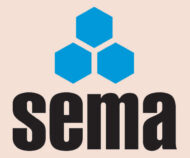Our first question this month asks if a Mezzanine Floor needs to be inspected if moved. Our second question is a regular and asks for a definitive description of the differences between shelving and racking.
 Moving a Mezzanine Floor
Moving a Mezzanine Floor
Q. We are moving a mezzanine floor from one building to an adjacent building. We have the necessary competence to do that as it is similar to the type of work that we do anyway.
I am aware that if we move a piece of equipment to a new location, under PUWER Reg 6 we need to re-inspect it when it is re-erected.
As stated we do have the necessary knowledge to do this, however I am being told that this needs to be to SEMA guidelines.
I have looked and I am unable to find any SEMA guidelines regarding mezzanines. Please could you advise me where to find this.
A. Whilst a mezzanine floor is often thought of as an item of ‘Plant’ it will (almost always) be considered to be a ‘Building’ as far as the Law is concerned and so there are some steps that need to be completed before the mezzanine floor is moved.
You do not normally require Planning Permission for a mezzanine floor however, you will almost always need Building Regulations Approval and, as you are moving the mezzanine to another building, it is probable that you will need to make a Building Regulation application to your Local Authority (LA) www.gov.uk/building-regulations-approval. Please be aware that the systems are slightly different in the various countries of the UK. In England and Wales you might be able to use an Approved Inspector instead of the LA www.cicair.org.uk/about-ai.
Your LA will likely require that you provide them with structural calculations and drawings of the proposed “building” (mezzanine) and this will likely include information on the provision of firefighting systems, fire alarms and escape routes. As the mezzanine floor is already installed in one of your other buildings much of this information should already be available however, it will need to be modified for the “new” building. If you have not yet completed this step then it would be unwise to move the mezzanine as you could be open to fines and prosecution as the mezzanine could be considered to be unauthorised building works. If you do not have the necessary skills “in-house” then you should engage a local Structural Engineer, Architect or mezzanine specialist.
Your insurers may also have an interest in this as it might affect your insurance risks.
Definitive Description between Warehouse Racking & Shelving
Q. Is there a definitive description between warehouse racking and warehouse shelving?
Does this alter inspection regimes?
A. We are not aware of authoritative documents where racking and shelving are defined, indeed many of the common definitions for a shelf involve the shelf being fixed to a wall, and this is rarely the case in commercial/industrial settings. Some office-type storage equipment (shelving), might be classified as “furniture” in which case codes such as EN16121:2023 might be relevant.
However racking and shelving are considered to be work equipment and, therefore, are covered by the Provision and Use of Work Equipment Regulations (PUWER) which requires, amongst other things;
•That the equipment should be inspected and maintained in good working condition.
•That people operating work equipment are given adequate training in the correct use of the equipment.
•That employees are given necessary health and safety information.
This means that your legal obligations are the same irrespective of whether you might classify your storage media as “racking” or “shelving”.
In general though “racking” is considered to be loaded by some sort of machine whereas “shelving” is generally expected to be loaded by hand.
SEMA Rack Safety Awareness Inspection Courses
SEMA runs a one-day safety course on Rack Safety Awareness and Inspection. These courses are aimed at end users, giving an in-depth look at the need for inspections, how to conduct an assessment and what actions to take when this is completed. These courses are held at the SEMA headquarters in Burntwood, Staffordshire, but arrangements can be made to hold them at the delegates’ premises.
SEMA Approved Rack Inspectors Qualification
This qualification is aimed at professionals who conduct rack surveys as an integral and significant part of their duties. It involves delegates in undertaking an in-depth SEMA Course, together with an examination and practical assessment. CPD will be an important part of the qualification, demonstrating to end users that SEMA Approved Inspectors maintain a high professional standard.
SEMA Publications
SEMA has 26 publications in stock – Codes of Practice, ‘Guides’ and European documents – all of which are available to purchase online. For further information on these documents contact SEMA or visit our website, www.sema.org.uk.




Comments are closed.